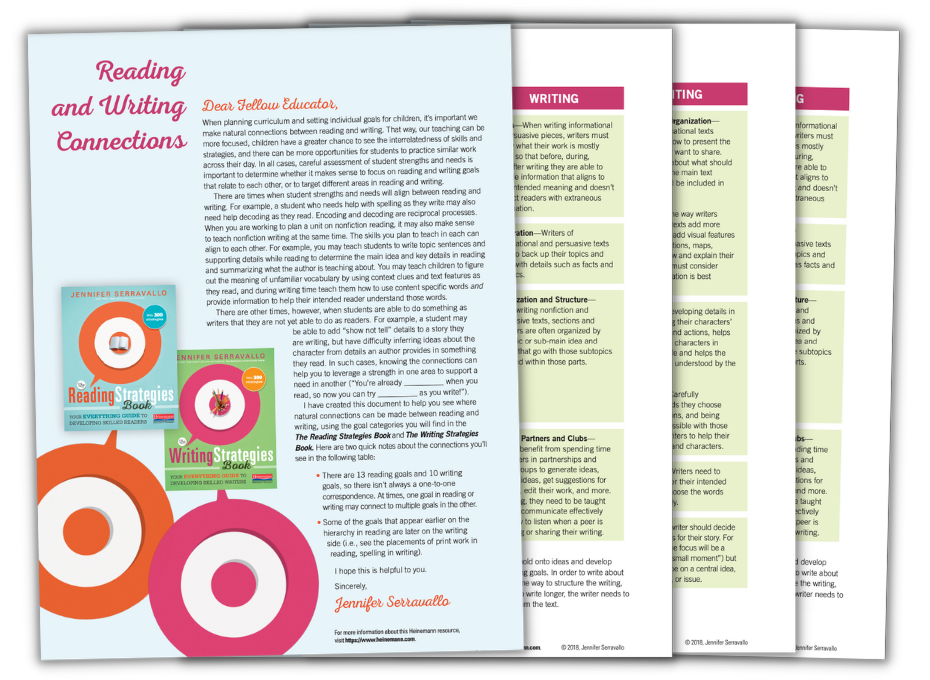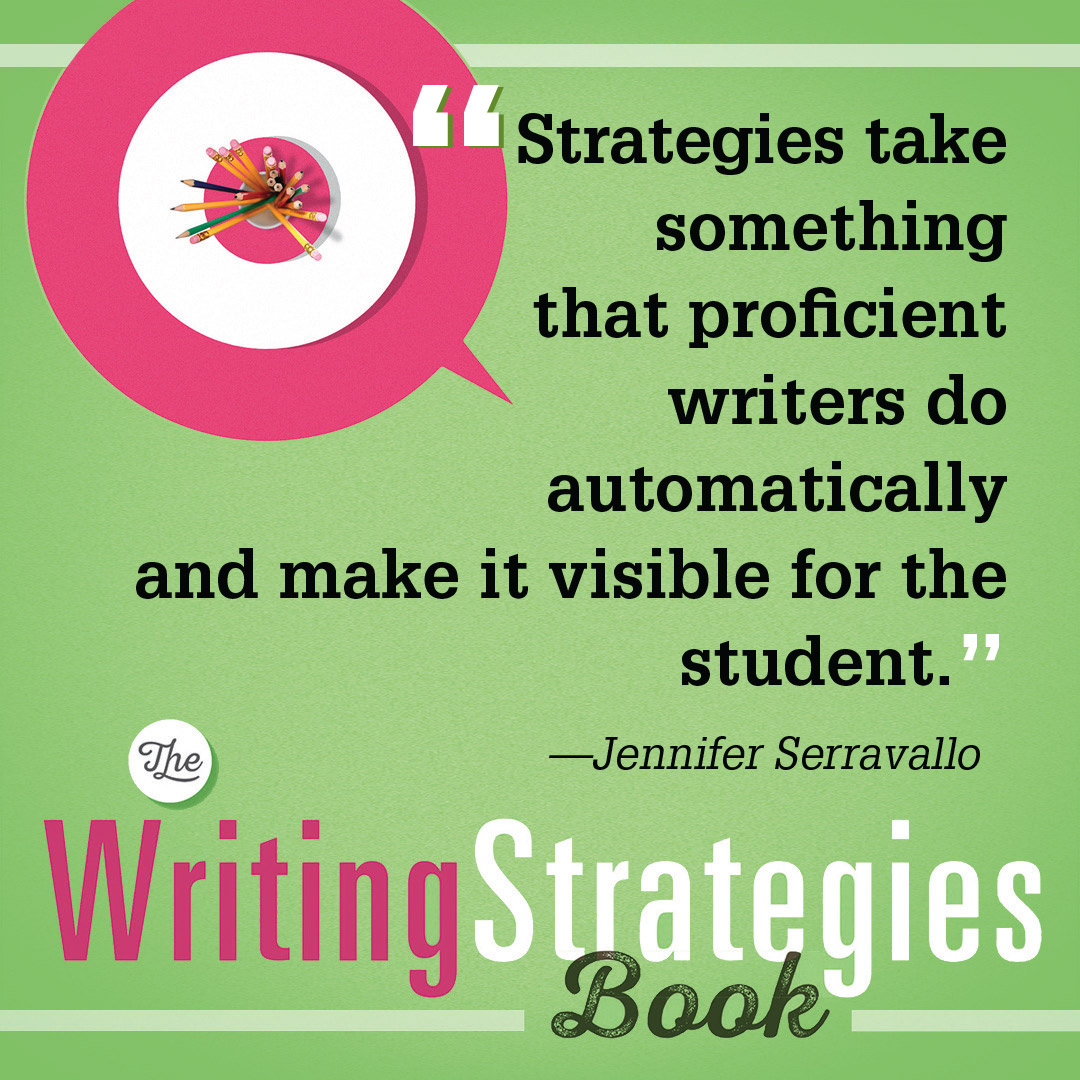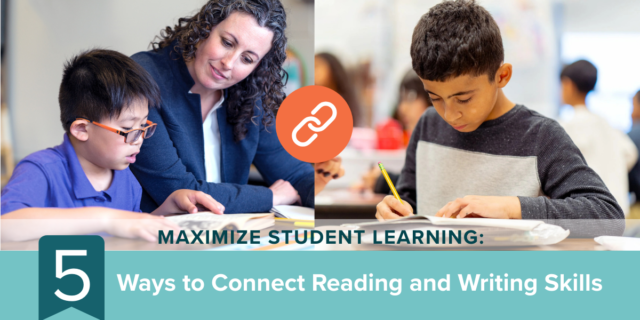
If you’re familiar with Jennifer Serravallo’s The Reading Strategies Book and find yourself wondering how closely it relates to The Writing Strategies Book, you’re in luck. Jen has created a handy chart to illustrate the connections between the 13 reading goals in the Reading Strategies Book and the 10 writing goals in the Writing Strategies Book. In her letter below she’ll walk you through the ways reading goals work in tandem with writing goals to deepen students’ literacy learning in your classroom.
Below, read the letter from Jennifer Serravallo about the Reading and Writing Connections:
Dear Fellow Educator,
When planning curriculum and setting individual goals for children, the more we can make natural connections between reading and writing, the more focused our teaching is, the more children have a chance to see the interrelatedness of skills and strategies, and the more opportunities they have to practice similar work across their day. In all cases, careful assessment of student strengths and needs is important to determine whether it makes sense to focus on reading and writing goals that relate to each other, or to target different areas in reading and writing.
There are times when student strength and needs will align between reading and writing. For example, a student who needs help with spelling in writing, may also need help decoding in reading. Encoding and decoding are reciprocal processes. When you are working to plan a unit on nonfiction reading, it may also make sense to teach nonfiction writing at the same time. The skills you plan to teach in each can align to each other. For example, you may teach students to write topic sentences and supporting details in writing while reading to determine the main idea and key details in reading and summarizing what the author is teaching about. You may teach children to figure out the meaning of unfamiliar vocabulary by using context clues and text features as they read, and during writing time teach them how to use content specific words and provide information to help their intended reader understand those words.
There are other times, however, where students are able to do something as writers that they are not yet able to do as readers. For example, a student may be able to add show not tell details to a story they are writing, but have difficulty inferring ideas about the character from details an author provides in something they read. In these cases, knowing the connections can help you to leverage their strength in one area to support a need in another (“You’re already ___ when you read, so now you can try ___ as you write!”).
I have created this document to help you make natural connections between reading and writing when doing so would most benefit your students. Using the same goal categories you will find the The Reading Strategies Book and The Writing Strategies Book. Here are some notes about the connections you’ll see in the following table:
- There are 13 reading goals and 10 writing, so there isn’t always a one-to-one correspondence.
- At times, one goal in reading or writing ,may connect to multiple goals for the other
- Some of the goals that appear earlier on the hierarchy in reading are lower on the writing side (i.e. see the placements of print work in reading, spelling in writing)
I hope this is helpful to you.
Sincerely,
Jennifer Serravallo
[Download the full Reading and Writing Connections Guide]




